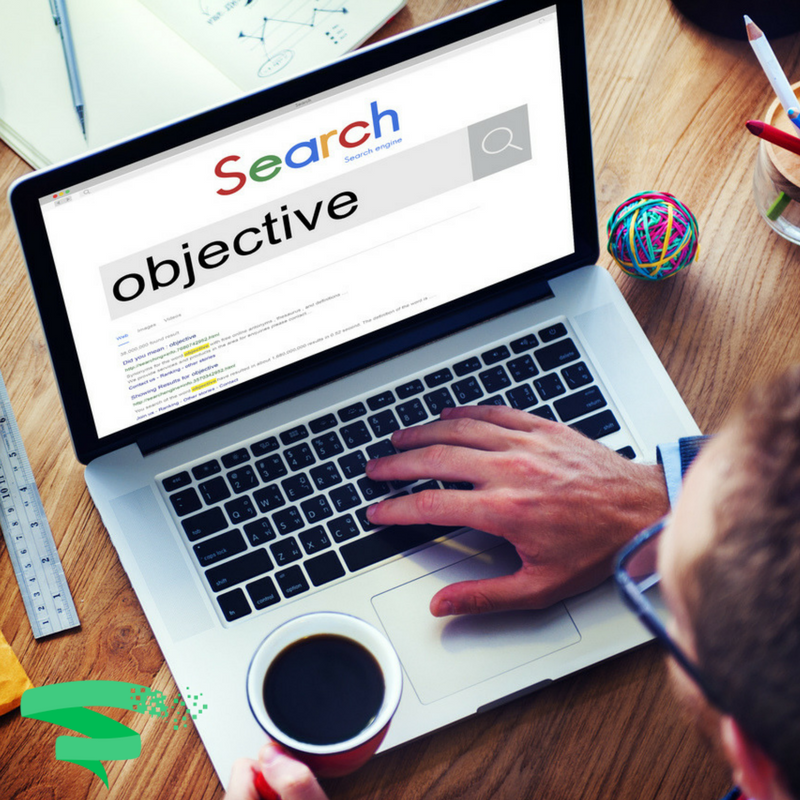Search intent is sometimes called keyword intent. It refers to what users want when they enter a search term into a search engine. Google’s algorithms are able to interpret search intent and display results that meet it. How people choose and process search results differs depending on their goal, which means that understanding search intent is crucial for SEO as well as for general digital marketing.
Common Search Intents
- To Visit a Website
The user is looking for a particular website. Example: someone who wants to visit the Twitter website may simply type “twitter” into the Google search box. - To Answer a Question
With this search, the user is looking for information that answers a specific question. Their search term may include the words “how” or “why” or “where.” - To Complete an Action
Users with this intent may want to purchase something, sign up for something or to locate a phone number to call a business. In other words, they want to convert. - To Find Free Products
Users with this intent want to find a product that is available at no cost to them. They are less likely than others to convert.
Depending on which category a user falls into, they will have different expectations with regard to search results and landing pages.
Content Optimization for Search Intent
Along with “how,” “why” and “where”, a user may signal a desire for information by using modifiers like “what is” or “history of.” To optimize for users whose intent is to find answers, use the full question in your content. Add questions to important parts of your on-page content, such as:
- Titles
- Headers (h1 and h2, specifically)
- Meta descriptions
When you answer the question on the page, put the answer right below the question.
In the case of a how-to question, put the question in your header (h1) and provide each step of the answer in an h2 tag below it.
When the user wants to convert, optimize for this intent by first making sure that they understand the benefits of conversion. You will want to:
- Provide a Clear Call to Action(CTA)
Your CTA should immediately draw the reader’s attention, which means that it should be eye-catching. - Have a Clean Design
Much of a user’s first impression of a page relates to its design. Use as few words as possible to get your message across while also using graphics to communicate your offer’s value. - Build Trust
Focus on building trust between you and the reader. Create an emotional bond, thus making the decision process simpler. - Keep it Short
Limit forms to information that is essential for the conversion. Try to condense as much information as you can on the landing page.
Using Search Intent For Your Business
- Visitors Who Are Looking for Products
Ensure that your products, services, and other offerings have landing pages. Those pages should be optimized with the use of brand names in titles, meta descriptions, and headers. - Visitors Seeking Information
Most of the searches on Google are from people seeking information. Look at these searches as ways to bring leads in for conversion later. They allow you to establish your brand as a source of authoritative information while telling people about your offerings. - Visitors Who Want to Convert
These are obviously the most important from a business standpoint. Ensure that they are able to convert right from the landing page. - Visitors Who Want Freebies
If you offer free versions of your products or services, you should have a landing page for these visitors. If you do not have free versions on offer, you can provide a curated list of free resources. Even if they do not convert, these visitors may still be valuable for brand awareness.
SEO Benefits of Targeting Search Intent
By optimizing for search intent, your website shows up in results that are more relevant to what search engine users want. This ensures qualified traffic, which means that you should see improvements in conversion rates. Expect to see:
- Lower Bounce Rates
Your visitors will be getting what they want, so they will stay on your pages. - Increased Page Views
If you meet a visitor’s search intent, they are more likely to engage with the rest of your website’s content. - Appearances in Google’s Answer Boxes
Appearing in these snippets can be incredibly beneficial since your pages will rank above the top search result. - Reach Wider Audiences
Google can interpret completely different search terms as having the same intent. This means that a page that has been optimized for search intent might show up in a variety of search results pages.
As a marketer, it is necessary to get smarter and adopt new strategies as SEO becomes more complex. If you have not yet considered optimizing your pages for search intent, now is the time to start.

